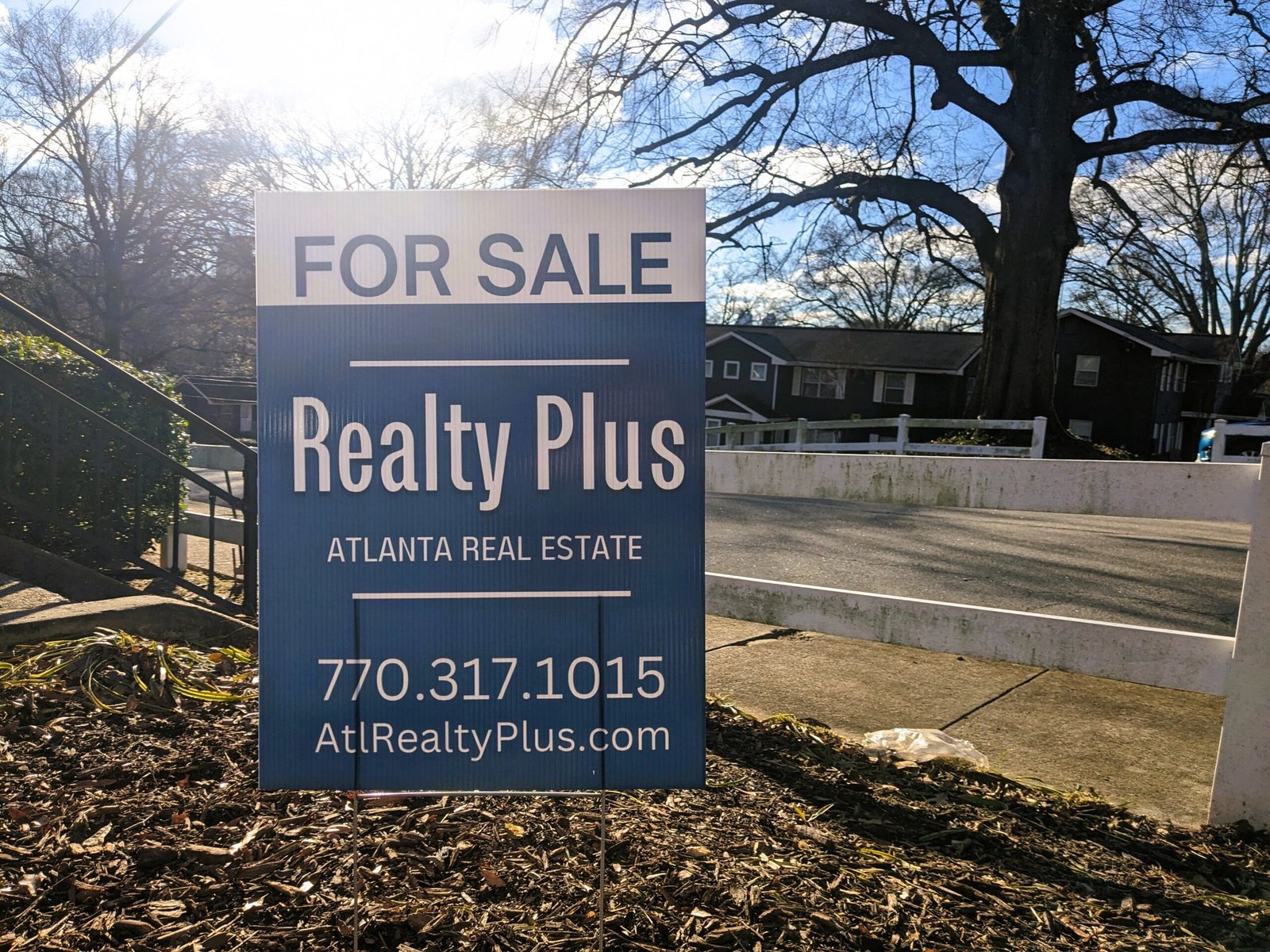

- Atlanta Real Estate, Blog, Featured, Owner Financing Homes, Smart Contracts, Top News
Navigating Owner Financing Terms: What You Need to Know Before Signing
- By Rich Shelor
Owner financing offers a flexible alternative to traditional mortgages, especially for buyers who may not qualify for a conventional loan. However, with that flexibility comes a need for vigilance. Unlike standardized mortgages, owner financing deals are often unique to the parties involved, which means understanding the terms is paramount to protecting your interests. This article will guide you through the essential terms and conditions of owner financing, equipping you with the knowledge to navigate these agreements confidently.
1. Interest Rates: What to Expect
Interest rates in owner financing agreements are often higher than those in traditional mortgages. This is because the seller is taking on more risk, especially if the buyer has a less-than-ideal credit history. It’s crucial to understand how interest rates will affect your monthly payments and the total cost of the loan over time.
Key considerations:
Rate Comparison: Compare the interest rate offered by the seller with current market rates for traditional mortgages. Even though owner financing rates are generally higher, they should still be within a reasonable range. If the rate seems excessively high, you may have room to negotiate.
Fixed vs. Adjustable Rates: Determine whether the interest rate is fixed or adjustable. A fixed-rate loan keeps the interest rate constant throughout the term, providing stability. An adjustable-rate loan may start lower but can increase over time, potentially leading to higher payments in the future.
Impact on Monthly Payments: A higher interest rate means higher monthly payments. For example, a 1% increase in the interest rate on a $200,000 loan could raise your monthly payment by over $100. Ensure that the rate aligns with your budget.
Understanding the impact of interest rates helps you assess whether the terms are fair and sustainable for your financial situation.
2. Loan Term: Short vs. Long-Term Agreements
Owner financing agreements typically have shorter loan terms than traditional mortgages, often ranging from three to five years. At the end of this term, a balloon payment—representing the remaining balance—is due. This structure can be advantageous or risky, depending on your long-term financial plans.
Key points to consider:
Short-Term Nature: The short duration of owner financing loans is intended as a bridge, allowing buyers to improve their credit or financial standing before refinancing with a traditional lender. However, it also means that you’ll need a clear exit strategy, whether that’s refinancing, selling the property, or making the balloon payment in cash.
Balloon Payment: The balloon payment is a significant financial obligation that comes at the end of the loan term. For example, if you borrow $250,000 and make only interest payments over five years, you could still owe nearly the entire principal as a balloon payment. Ensure you have a solid plan to handle this payment when it comes due.
Negotiating Flexibility: While sellers typically prefer shorter terms, you may be able to negotiate a longer term if it’s mutually beneficial. A longer term provides more time to save for the balloon payment or prepare for refinancing.
The loan term is a critical component of the agreement that requires careful planning and foresight.
3. Balloon Payments: Preparing for the Lump Sum
As mentioned, the balloon payment is a substantial, one-time payment due at the end of the loan term. It’s a common feature of owner financing deals, and being unprepared for it can lead to financial distress or even foreclosure.
Strategies to manage the balloon payment:
Refinancing: The most common strategy is to refinance into a traditional mortgage before the balloon payment is due. This requires you to build up your credit, maintain a stable income, and monitor interest rates throughout the term. Start preparing for refinancing well in advance.
Saving in Advance: If refinancing isn’t an option, you’ll need to save aggressively to meet the balloon payment. This can be challenging but is essential to avoid losing your home.
Selling the Property: If you anticipate difficulty in making the balloon payment, selling the property may be a viable exit strategy. Ideally, the property will have appreciated, allowing you to pay off the loan and potentially make a profit.
Understanding and planning for the balloon payment is crucial to the success of an owner financing deal.
4. Legal Protections: Safeguarding Your Interests
Because owner financing deals are less regulated than traditional mortgages, legal protections are vital. Georgia law requires specific disclosures and terms to be included in these agreements, but it’s still essential to have a qualified real estate attorney review the contract before you sign.
Important legal considerations:
Foreclosure Rights: In Georgia, the seller has the right to foreclose on the property if you miss payments, often after just one default. Ensure that the contract clearly outlines the foreclosure process and your rights as a buyer.
As-Is Condition: Many owner financing deals involve properties sold “as-is,” meaning you accept the property in its current condition. It’s crucial to conduct a thorough inspection and be aware of any potential issues before committing.
Required Disclosures: The contract should include all required Georgia disclosures, even if they are summarized. This includes information about the property’s condition, any existing liens, and the seller’s rights in the event of default.
Negotiating Terms: Just because a contract is presented doesn’t mean it’s set in stone. Be prepared to negotiate terms that protect your interests, such as more lenient default clauses or a longer loan term.
Having legal protections in place ensures that both parties’ rights are respected and that the transaction proceeds smoothly.
5. Additional Costs: Beyond the Purchase Price
In addition to the principal and interest, several other costs can impact the overall affordability of your owner financing deal. These include closing costs, property taxes, insurance, and maintenance expenses.
Breakdown of additional costs:
Closing Costs: Unlike traditional mortgages, where some closing costs may be covered by the lender, in owner financing deals, the buyer often pays most of these expenses. Typical closing costs include attorney fees, title insurance, and recording fees, which can range from 2% to 5% of the purchase price.
Property Taxes: Even if the seller handles property taxes, the cost is likely factored into your payments. Know the property’s annual tax rate and how it will affect your budget.
Homeowners Insurance: This is non-negotiable, as it protects your investment and is often required by the seller. The cost of insurance varies based on the property’s location, value, and your coverage needs.
Maintenance and Repairs: Homeownership comes with the responsibility of maintaining the property. Budget for routine maintenance as well as unexpected repairs, which can be costly.
Understanding these additional costs will help you budget accurately and avoid surprises down the road.
6. Flexibility in Terms: Customizing Your Agreement
One of the main advantages of owner financing is the ability to negotiate terms that suit both parties. This flexibility can make homeownership more accessible, but it also requires careful negotiation to ensure a fair and beneficial deal.
Opportunities for negotiation:
Interest Rate: While the seller may initially propose a higher rate, you can negotiate based on your financial history, the property’s condition, or other factors. If you can offer a higher down payment, you may have more leverage to secure a lower rate.
Loan Term: If a short loan term with a balloon payment feels too risky, discuss the possibility of extending the term or structuring payments differently to reduce the balloon amount.
Payment Structure: Depending on your financial situation, you may want to propose a payment structure that reduces your monthly payments initially or allows for lump-sum payments without penalty. This can provide flexibility as your financial situation evolves.
Default Clauses: Clarify and negotiate the terms under which the seller can declare a default and initiate foreclosure. A more lenient default clause can provide a safety net if you encounter temporary financial difficulties.
Customizing the agreement to your needs while ensuring the seller’s requirements are met can lead to a win-win situation.
Conclusion
Navigating the terms of an owner financing deal requires a deep understanding of the components involved and a clear strategy to protect your interests. By thoroughly examining interest rates, loan terms, balloon payments, and legal protections, you can negotiate a deal that aligns with your financial goals and paves the way for successful homeownership. Remember, the key to a successful owner financing agreement is not just in securing the deal but in managing it wisely over time.
Related Posts


Success Stories: Profit Off Rezoning Lots In Atlanta
Modern Marketing

Securing Lucrative Real Estate Deals with Minimal Upfront Investment
Learn how option contracts can help real estate investors lock in high-potential properties with minimal risk and upfront costs. Discover the strategies, benefits, and steps to leverage this powerful tool for maximizing profits in the competitive Atlanta real estate market.

Success Stories: Profit Off Rezoning Lots In Atlanta
Discover how strategic lot rezoning in Atlanta can turn undervalued properties into high-performing investments. Learn the steps, benefits, and success stories that showcase the transformative power of rezoning in the booming Atlanta real estate market.

Mastering Real Estate Deals: Key Metrics Evaluation Strategies
Unlock the potential of real estate syndication by learning how to evaluate deals like a seasoned investor. This guide demystifies essential metrics and provides actionable insights to help you make informed, profitable decisions.

Unlocking Real Estate Syndication $100k
educating yourself, defining your goals, building a network, and conducting thorough due diligence—you position yourself for success in the world of real estate syndication. Remember, every investment carries risks, but with careful planning and informed decisions, you can navigate these challenges.

Real Estate Syndication: Pooling Resources for Bigger Investment Opportunities in Atlanta
Real estate syndication enables investors to pool their capital and expertise to acquire larger properties that would otherwise be unattainable individually. Learn how this powerful investment strategy works, its benefits, risks, and how you can use it to capitalize on Atlanta’s growing real estate market.

Mastering Lease Options: A Flexible Strategy for Real Estate Investors in Atlanta
Lease options offer a versatile way to control properties, generate income, and reduce risk. In this comprehensive guide, discover how to master this flexible strategy and apply it to the Atlanta real estate market.

Accelerate Depreciation Deductions for Maximum Tax Benefits
Unlock the full potential of your real estate investments by combining cost segregation with a 1031 exchange. Learn how this powerful strategy can accelerate depreciation deductions and maximize your tax savings.
Advance AI Business Analysis

Securing Lucrative Real Estate Deals with Minimal Upfront Investment

Success Stories: Profit Off Rezoning Lots In Atlanta

Mastering Real Estate Deals: Key Metrics Evaluation Strategies

Unlocking Real Estate Syndication $100k

Real Estate Syndication: Pooling Resources for Bigger Investment Opportunities in Atlanta
© 2024 All Rights Reserved.






